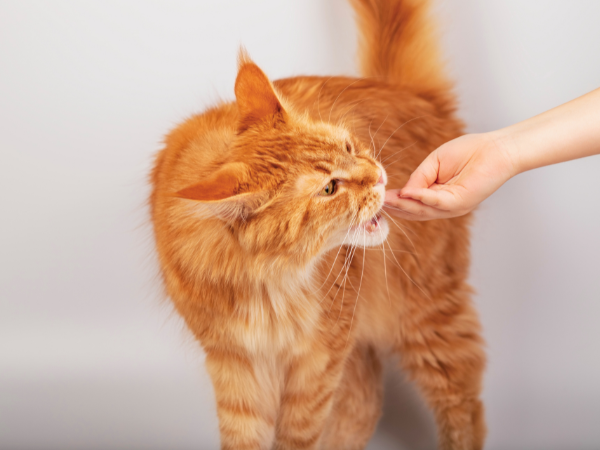Simple commands or tricks, like sitting or using the litter box, are achievable with patience. This guide will reveal proven strategies to help you train your cat effectively. With the right approach, you can enjoy a better bond with your furry friend and teach them valuable skills.
Understanding Feline Learning Behavior
Cats have unique ways of learning. They are independent learners, responding best to positive reinforcement rather than commands. Knowing how cats learn makes training easier and more effective.
How Cats Differ From Dogs In Training
Dogs often follow commands and enjoy pleasing their owners. Cats, on the other hand, are more independent. They prefer to explore and make choices.
Here are some key differences:
- Training Approach: Dogs respond well to commands. Cats prefer gentle encouragement.
- Attention Span: Dogs often maintain focus longer. Cats may lose interest quickly.
- Social Interaction: Dogs seek interaction. Cats enjoy solitude.
Using these differences can help tailor your training approach. Positive reinforcement works best. Treats, praise, and playtime motivate cats to learn.
The Role Of Instinct And Motivation In Cats
Cats are guided by their instincts. Natural behaviors like hunting and curiosity can be used to encourage desired actions.
Motivation is key for cats. They may not respond to typical training methods. Here are some effective motivation strategies:
- Use Treats: Offer small, tasty treats during training.
- Incorporate Play: Use toys to encourage active participation.
- Respect Their Space: Allow cats to choose when to engage.
Recognize each cat’s unique preferences. Some may prefer playtime, while others like food rewards. Tailoring your approach can lead to successful training.

Essential Tools For Cat Training Success
Essential tools play a key role in cat training success. These tools help create a positive learning experience. Let’s explore the tools you need for effective cat training.
Clickers, Treats, And Toys: Key Training Aids
Clickers, treats, and toys are essential for effective cat training. They help capture and reward good behavior effectively. Here’s how each tool contributes to training:
- Clickers: A small device that makes a clicking sound. The sound is quick and clear, which helps cats understand what behavior is rewarded.
- Small Treats: Using small treats keeps your cat motivated. They should be easy to chew and swallow. This makes training sessions quick and enjoyable.
- Favorite Toys: Toys can make training fun. Use them to encourage play or to reinforce commands. A well-timed play session can motivate your cat to learn more.
Using these tools together can make a big difference in your cat’s training journey. Remember to keep sessions short and fun.
Creating The Perfect Environment For Learning
A quiet, distraction-free space makes it easier for cats to focus during short training sessions. Here are some tips for creating the ideal training environment:
- Quiet Space: Select a room away from noise and distractions. Avoid high-traffic areas where your cat might feel overwhelmed.
- Comfortable Area: Ensure the space is comfortable. Soft surfaces or cozy spots can help your cat feel secure.
- Consistent Location: Use the same spot for training each time. This helps your cat recognize it as a training area.
Consider the following factors for a successful environment:
- Limit visual distractions, like other pets or moving objects.
- Keep training sessions brief, around 5 to 10 minutes.
- Use your cat’s favorite toys and treats to engage them.
Creating the right environment promotes learning. Your cat will feel relaxed and ready to learn. Set the stage for success with these simple adjustments.

Step-by-Step Strategies To Train Your Cat
Training not only strengthens your bond but also helps your cat feel secure. Using simple commands and good habits makes life easier for both of you.
Teaching Basic Commands: Sit, High-five, And Come
Training your cat to follow commands can be fun and rewarding. Start with simple commands like sit, high-five, and come. Use treats and hand signals to guide cats into simple, repeatable actions with patience. Here’s how:
- Sit
- Hold a treat above your cat’s head.
- As they look up, their bottom will lower.
- Say “sit” when they sit.
- Give them the treat immediately.
- High-Five
- Hold a treat in your hand.
- Encourage your cat to reach for it.
- When their paw touches your hand, say “high-five.”
- Reward them with the treat.
- Come
- Call your cat’s name in a cheerful voice.
- Show a treat to get their attention.
- When they come to you, say “come.”
- Reward them right away.
Repeat these steps daily. Keep training sessions short, about 5-10 minutes. Consistency is key. Soon, your cat will respond to these commands with ease.
Training Litter Box And Scratching Behavior
Start by placing the litter box in a quiet, accessible area. Encourage proper habits by rewarding use of the litter box and designated scratching posts. Here are some tips:
- Choose a litter box that is easy for your cat to enter.
- Use unscented, clumping litter.
- Keep the box clean; scoop daily.
- Praise your cat when they use the box.
For scratching behavior, provide scratching posts. Cats need to scratch to keep their claws healthy. Place the posts near their favorite spots. Encourage them to use the posts with treats and praise.
With time, your cat will learn where to scratch and where to go for bathroom needs. This will lead to a happy, well-trained cat.

Common Training Challenges And How To Overcome Them
Training requires patience and creativity. Proven strategies exist to overcome these issues. Let’s explore some common training challenges and how to tackle them.
Dealing With Stubbornness And Disinterest
Stubbornness is a common issue when training cats. Some cats simply do not want to follow commands. This behavior can be frustrating, but there are ways to motivate your feline friend.
- Break training into shorter sessions: Cats have short attention spans. Keep training sessions brief, around 5 to 10 minutes.
- Find what uniquely motivates your cat: Each cat is different. Some may respond to treats, while others prefer playtime.
- Use positive reinforcement: Reward your cat immediately when they follow a command. This can be treats, praise, or petting.
Here is a simple table to help identify what motivates your cat:
| Motivation Type | Examples |
|---|---|
| Treats | Soft cat treats, dried fish, or small pieces of cooked chicken |
| Toys | Feather wands, laser pointers, or balls |
| Affection | Petting, cuddling, or chin scratches |
Keep trying different methods to see what works best. Be patient and consistent. Remember, training is a process.
Redirecting Negative Behaviors Effectively
Cats can develop negative behaviors like scratching furniture or knocking things over. It is crucial to redirect these actions to acceptable alternatives.
- Identify triggers: Observe what causes unwanted behavior. Is your cat bored? Are they looking for attention?
- Use toys and praise: Shift unwanted behaviors toward acceptable alternatives. Offer a toy when your cat scratches furniture.
- Provide alternatives: Set up scratching posts or interactive toys to keep your cat engaged.
Here are some strategies to redirect negative behavior:
- Place scratching posts near furniture.
- Encourage playtime with interactive toys.
- Offer treats for positive behavior.
Redirecting takes time and patience. Always use positive reinforcement. Celebrate small successes. This approach builds trust and encourages good behavior.
Maintaining Progress And Building A Stronger Bond
This section will explore how to keep training consistent and celebrate the small wins along the way.
Consistency And Routine Are Key
Cats thrive on routine. A regular schedule helps your cat understand what to expect. Set aside specific times each day for training sessions. Keep these sessions short, around 5 to 10 minutes.
Here are some tips for consistency:
- Use the same commands for each behavior.
- Reward your cat immediately after they perform the desired action.
- Stick to the same training location to create familiarity.
- Train at the same time each day to build a habit.
Training should be a regular, fun activity to reinforce learning and trust. Use treats, toys, or praise as rewards. Remember, patience is essential. Some cats learn faster than others.
Celebrating Small Wins Along The Way
Recognizing progress is important. Each small win matters. Celebrating these moments keeps training positive and motivating for both you and your cat.
Here are some ways to celebrate:
- Give extra treats for good behavior.
- Offer praise verbally or with petting.
- Take breaks for playtime after a successful session.
Keep a record of your cat’s progress. Write down each trick they learn or behavior they improve. This helps you see how far they have come.

